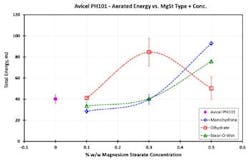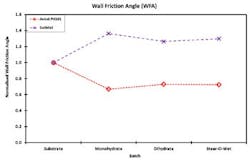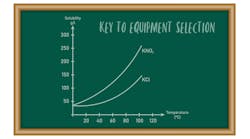Fine powders developed to meet certain product performance targets often suffer from inconsistent and unpredictable flow that can lead to caking and in-process blockages. Therefore, processors frequently include additives in a blend to enhance flow properties. Although typically incorporated to improve process efficiency, additives also can substantially influence final product quality.
When optimizing the use of flow additives, it's important to recognize their impact on behavior may extend beyond a simple improvement in flowability. Choosing the most-appropriate grade of flow additive for a particular blend and incorporating it at an optimal level for the application also are crucial. This article provides some guidance on the use of powder additives, outlining issues useful to assess as part of blend development. Experimental data illustrate how multifaceted powder characterization can help this development process.
USING FLOW ADDITIVES
Flow additives ease powder flow by physically lubricating interparticulate movement and by disrupting the cohesive bonds between particles within the powder. Reducing or breaking interparticulate forces, such as electrostatic or Van der Waals interactions, allows particles to move more easily with respect to one another, thereby enhancing flowability. A corresponding reduction in the adhesive forces between a powder and a material of construction can ease movement within process equipment and storage vessels. As a result, additives in certain circumstances simultaneously may serve both as lubricants and flow enhancers.
Table 1. Three commercially available magnesium stearate products underwent testing.
Figure 1. All three flow additives cut the microcrystalline cellulose's SE by more than half to a value that remains uniform across a range of low concentrations.
Figure 2. The AE of the cellulose depends upon the grade of MgSt employed and shows a nonlinear response with respect to concentration.
Figure 3. MgSt, regardless of grade, increases the WFA of sorbitol but decreases the WFA of the microcrystalline cellulose.
Figure 4. The MgSt raises the AE of the cellulose but lowers the AE of the sorbitol, with dihydrate inducing a more pronounced change than other grades.
BRIAN ARMSTRONG is a powder technologist and JAMIE CLAYTON is operations director for Freeman Technology, Tewkesbury, U.K. E-mail them at [email protected] and [email protected].







